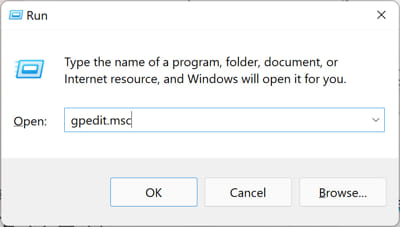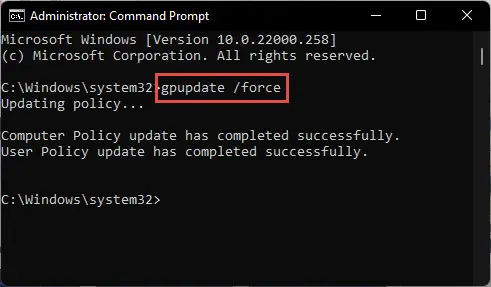The Windows operating system offers different power states. It has the hibernation mode, the sleep mode, and the regular active mode. Each of these modes offers a different state for the user, conserving (and consuming) different amounts of power.
When you are leaving your PC in an idle state, you would prefer to put it in either hibernation mode, or the sleep mode; depending on how long you will be gone from your PC. By default, the power options in the Start Menu show the option to put your PC into sleep mode. However, in certain cases, this option can be missing.

In certain cases, the sleep option is replaced by the hibernation option. However, it is not what the user wants since both of them offer different power states.
Table of Contents
Windows Sleep Mode VS Hibernation Mode
When your Windows PC is put into hibernation mode, it saves the current state of the PC, including all open files and folders, into the hard drive and turns everything off. Thus, the hibernation state is when your PC is consuming the least amount of power.
In the sleep mode, the state of your computer is saved into its memory, i.e. RAM, whilst other components are shut off. This mode also conserves energy, but not as much as the hibernation mode.
This is why the computer wakes up faster from sleep mode than the hibernation mode – because more components need to be booted up when waking up from hibernation mode.
That said, people occasionally need to put their PC to sleep, but how can they when the option is missing from the power options in the Start menu?
Why is Sleep Option Missing?
The sleep option can be missing from the power options deliberately or unintentionally. It may be possible that outdated display drivers do not support the sleep mode, or it has been disabled by an administrator.
Here are a few reasons why the sleep option might be missing:
- The option is disabled locally from your PC.
- The option is disabled by an administrator in your organization.
- Outdated drivers.
Let us now discuss how you can mitigate the issue and restore the sleep option in the Start menu.
How to Fix Missing Sleep Option in Start Menu Power Options
Enable Sleep Option from Control Panel
First things first; it may be possible that the option has been disabled locally from your PC. To rule it out and enable the option, follow these steps:
-
Navigate to the following:
Control Panel >> System and Security >> Power Options
-
Click Choose what the power buttons do on the left of the window.

Choose what the power buttons do -
Now click Change settings that are currently unavailable. Note that this option will only be visible if the options at the bottom of the page are greyed out.

Change settings -
Now check the box next to Sleep under “Showdown settings” and then click Save changes.

Enable sleep option
Now check to see if you can see the sleep option in your Start menu power settings.
If the option is still missing, continue to perform the remaining solutions given below.
Enable Sleep Mode from Group Policy
It may be possible that the sleep option has been removed from your Group Policies. In that case, you can enable it by performing these steps:
-
Open the Group Policy Editor by typing in gpedit.msc in the Run Command box.

Open Group Policy Editor -
Now navigate to the following location from the left pane:
Computer Configuration >> Administrative Templates >> Windows Components >> File Explorer
-
Here, double-click on the policy “Show sleep in the power options menu.”

Open policy settings -
From the policy properties, select the Enabled radio button, then click Apply and Ok.

Enable policy -
Now run the following cmdlet in an elevated Command Prompt for the changes to take effect:
GPUpdate /Force
Implement changes
Now check in the Start menu if the sleep option has been restored.
Restore Default Power Options
If the issue persists, you can try restoring all power settings to their default values. Note that any deliberate changes made to the power settings will be restored, and you will need to re-apply the changes again.
Follow this guide to restore all power settings to their default settings:
That is it! Now return to the Start menu’s power options and check if the sleep option is now available.
Run the Power Troubleshooter
Windows comes with its built-in troubleshooter, which can also fix issues relating to the different power modes. You can run this troubleshooter to automatically fix any power issues if detected.
Note: Some of the automatic fixes apply to your custom settings, such as screen brightness, sleep settings, display-off settings, etc. You can re-apply your custom settings again after running the troubleshooter.
-
Navigate to the following:
Settings app >> System >> Troubleshoot >> Other troubleshooters
-
Here, click Run in front of the Power troubleshooter.

Run power troubleshooter -
The troubleshooter will now launch, automatically scanning and fixing any determined issues. When fixed, click Close the troubleshooter.

Close troubleshooter
If the troubleshooter has successfully made changes to your PC, check to see if the sleep option is now restored.
Update Display Driver
If you find that the sleep option is still missing and any relevant settings are greyed out, the issue is likely because of outdated drivers. In that case, you must update the driver(s) using the Device Manager.

Initially, try updating the driver automatically. If Windows fails to find a newer driver version, then you can manually try updating the driver.
If you find that the latest drivers are already installed, then they are likely not the cause of the missing sleep option.
Final Thoughts
We are certain that either one of these options or more than one solution given in this post will work for you to restore the missing sleep option in the Start menu.
We suggest that you apply all of the given methods in this post in an attempt to restore the sleep option. If all of these fail, then the chances are that missing or corrupted system files are causing the issue, in which case you can try running the DISM and the SFC scans as a last resort.








